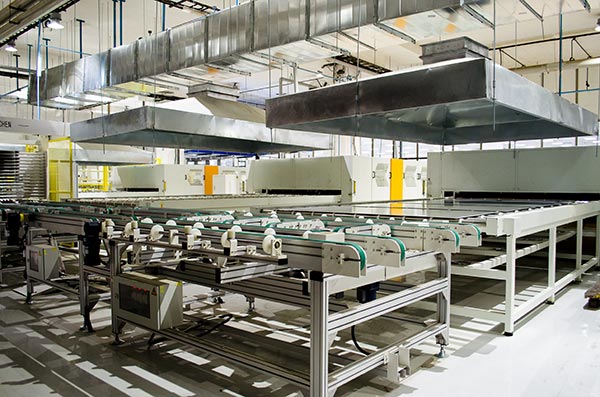Increasing the capacity utilization and scaling up the manufacturing would help lower selling prices for Indian PV module manufacturers and increase their competitiveness against Chinese counterparts, according to a new report by CEEW Centre for Energy Finance (CEEW-CEF).
Among short-term measures, the report suggests policy or fiscal interventions to allow immediate price leveling. However, it says, the government must provide clarity on applicability and timelines of tariff barrier as policy uncertainty increases risk perception and delays much-needed investments in manufacturing.
“The Ministry of Finance has already extended safeguard duty by one year (till July 2021), and now the government needs to provide clear information on the implementation timelines and tenure of the proposed basic customs duty (BCD),” the report stated.
The report recommends levying a tapered and a differential BCD on solar cells and modules, with nil duty on cells till March 2022.
“A higher duty on modules and lower duty on cells would ensure that our module facilities can increase their capacity utilization factor (CUF) and become competitive with imports. Similarly, a tapered duty on cells has been proposed considering the time required for commissioning of new cell manufacturing facilities,” the report explains.
Further, the report recommends an additional production subsidy of INR 1/watt for modules manufactured using domestic cells till March 2021, and linking viability gap funding with technological improvements. The recommended production subsidy between September 2020 and March 2021 is INR 2.5/watt for modules based on domestic cells and INR 1.5/watt for modules based on imported cells.
Cost differential
The report says Indian modules are nearly 33% more expensive than their Chinese counterparts, assuming 50% and 100% capacity utilization for Indian and Chinese manufacturers, respectively.
“If Indian module manufacturers were to operate at 100% utilization levels, the difference in prices would narrow to INR 3.32/kWh or around 22%”—it stated.
The increased selling cost of Indian modules arises from higher raw material and overhead costs. At full capacity utilization levels, bill-of-material (BOM) costs alone account for 56% of the price difference (INR 3.32/Wp) between Indian and Chinese modules.
The BOM cost for Indian manufacturers is INR 16.04/Wp against INR 14.17/Wp for Chinese manufacturers. “Nearly 46% of the difference in BOM costs (INR 16.04-INR 14.17=INR 1.87/Wp) stems from more expensive cells sourced by Indian manufacturers. Differences in TPT/PVDF backsheets, ethylene vinyl acetate (EVA) backsheets, glass, and aluminium frame costs account for another 32% difference in prices,” the report stated.
“Completely relying on local components and raw materials will saves forex outflow. Domestic manufacturers also stand to benefit in the long term if they scale up and deploy superior technologies. They can then break into the international market as well by initially supplying modules to member countries of the International Solar Alliance (ISA),” it added.
This content is protected by copyright and may not be reused. If you want to cooperate with us and would like to reuse some of our content, please contact: editors@pv-magazine.com.









When will India PV Panel Manufacturers “grow up” and start making EVERYTHING in India.
What is most shocking is that “mundane” items like Glass, Aluminum are also more expensive and clearly indicates overall Industry is unable to meet International Prices even when joying local access to the Indian Market (no need to Ship in Containers from… far far away..).
My suspicion of the Overheads, alluded to is this article, is the MAIN CULPRIT as India Manufacturers are “used’ to lax Operations and Higher Profit Margins. Then there is the Interest Rate too…. that makes EVERYTHING MORE EXPENSIVE.
However, even if RBI reduced the Interest Rate to 0% the Industry will not respond and “Trim its Overheads and Margins”.
Indian Manufacturers have to
* become “Slim and Trim”, by reducing Corporate Waste, Marketing/Sales Costs and Margins… aka Overheads
* RBI/GOI must reduce Interest Rates to match “International Lending Rates” that are affecting the WHOLE ECONOMY and Manufacturing Sector
* Provide Income Tax Breaks /Holidays like other countries too.
* Think big….. in 10GW size Factories…. not in MW/1GW range and REDUCE BOTH OVERHEADS, MATERIAL and MANUFACTURING COSTS.
Once ALL PLAYERS realize India’s needs of a 15TW Solar System with an Integrated Plan/Program, as being proposed, India will need 50 such Factories operating at full Capacity not the teeny weeny (1 or 2GW) ones under “consideration” forever…. the first 30 years will “build up” the initial 15TW System and after that the “Replacements” will keep them busy….. as I said forever. Then there is the Global Market of 150TW too….
Well said Ajay!